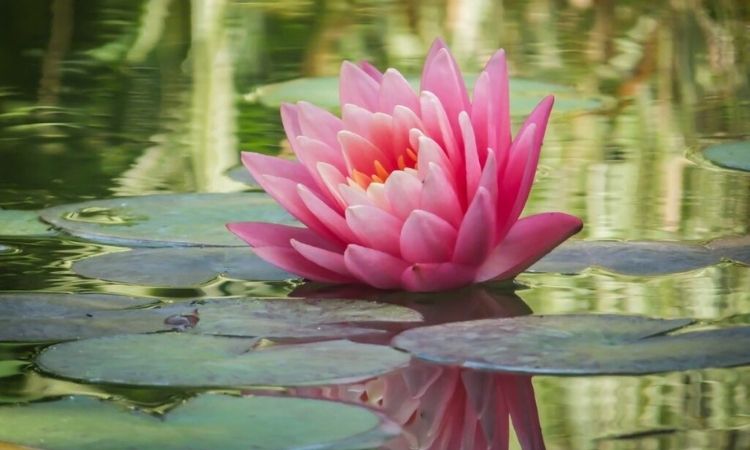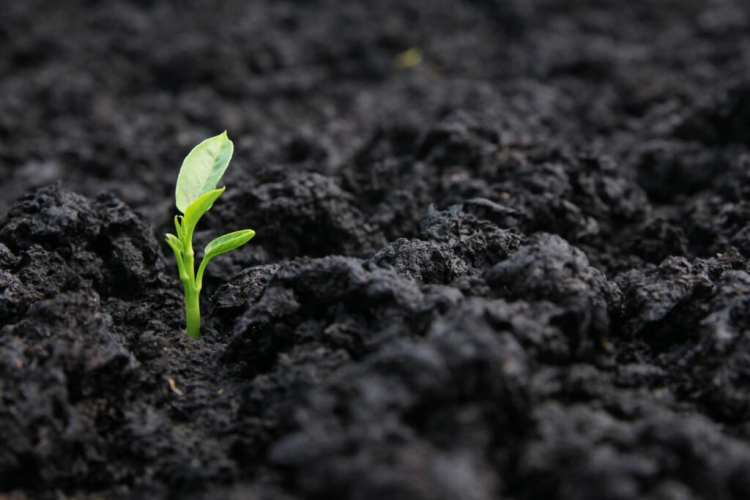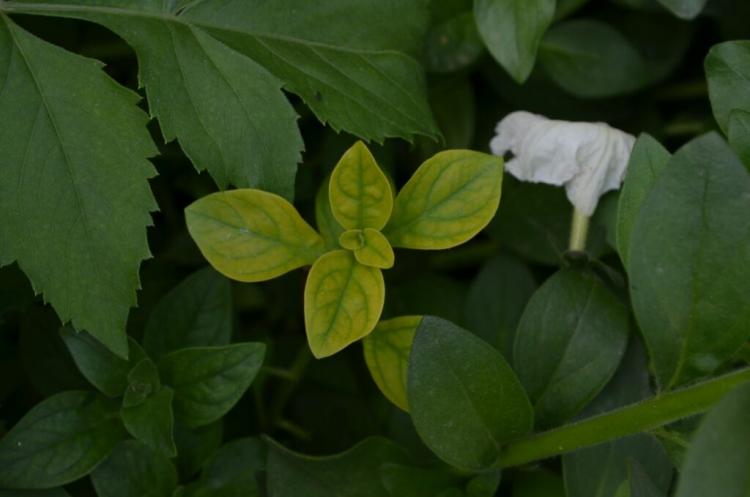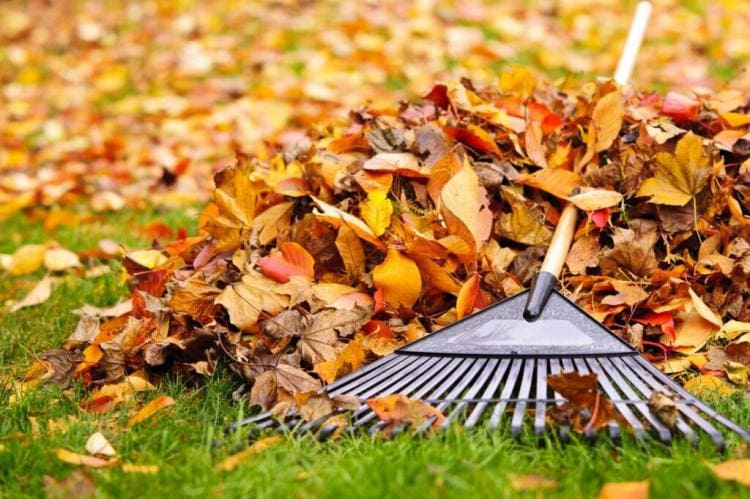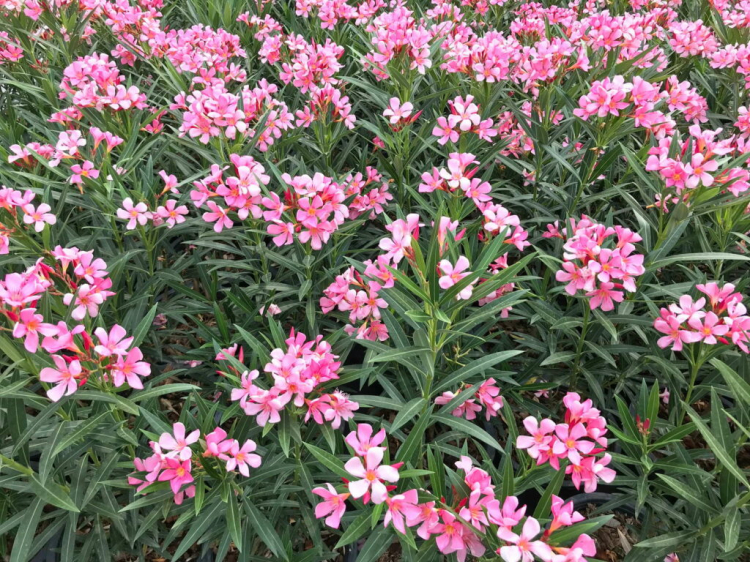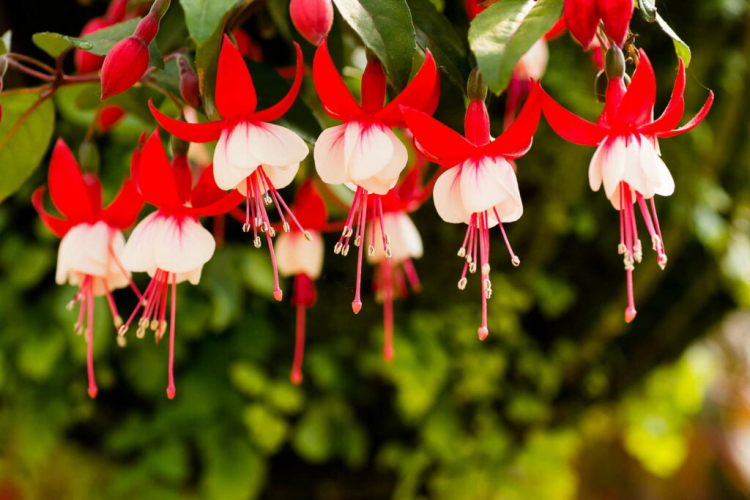20 The Best Pond Plants For Any Water Depth
A pond is a great eye-catcher – but only with the right plants, it becomes a real eye-catcher. We show which plants are best suited. Whether a small water feature or a large swimming pond – especially in summer, a garden pond is the focal point of any garden and attracts all attention.
However, so that the cool water does not look out of place, a beautiful pond planting is essential, because only this makes the pond a real gem. But just like in the rest of the garden, the right location is also important for pond plants, after all, the demands on the sun, as well as the right water depth, must be considered when placing your plants. Which pond plants should not be missing in your garden and for which depths they are suitable, we tell you here.
5 Pond Plants for the Wet Zone
Table of Contents
The wet zone is the outermost area of any pond, so it’s often forgotten when pond plants are mentioned because it’s not visible and it’s underwater. Nevertheless, planting this zone with permanently moist soil is important to make your pond an eye-catcher. The wet zone extends from the water level to the so-called capillary barrier, i.e. the point to which the pond liner has been raised.
1. Hanging Sedge
Extremely decorative and at the same time wonderfully uncomplicated – these two characteristics ensure that the hanging sedge (Carex pendula) is considered the perfect pond plant. The robust perennial grows up to 59 in. high and attracts all eyes with its overhanging growth and delicate flower spikes. In addition, the hanging sedge is evergreen, so it creates attractive accents even in winter.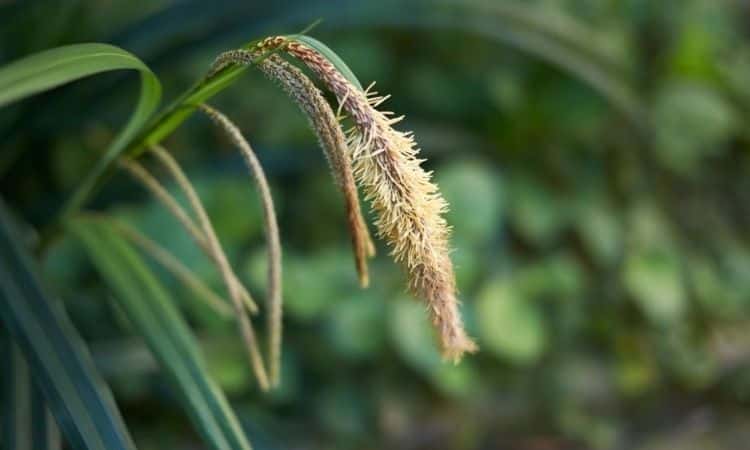
2. Tiered Primrose
With its enchanting inflorescences that look as if they are spread out on tiers, the tiered primrose (Primula bulleyana) is an attractive eye-catcher. Especially its noble flowers and its high growth of up to 27 in. ensure that the plant attracts all attention during its flowering period from June to July. Unfortunately, the tiered primrose is often not very long-lived. But do not worry – the plant reliably reseeds itself.
3. Three-Master Flower
Actually, the garden three-master flower (Tradescantia x andersoniana) is known more as a garden plant – however, you can also plant it wonderfully in the wet zone of a pond. The three-master flower is especially ideal for the transition between the garden bed and pond planting: With its striking, wheel-shaped flowers and bristly growth, the plant attracts all eyes.
4. Purple Loosestrife
The purple loosestrife (Lythrum salicaria) with its pink, red, or even dark purple inflorescences provides color in any bed. As a native wild perennial from swampy areas, this attractive plant is not only perfectly adapted to life in the wet zone but is also considered extremely butterfly-friendly and also impresses with its extensive water purification ability. Due to its growth height of up to 80 centimeters, however, the plant is more suitable as a background planting – otherwise, it quickly steals the show from all the others.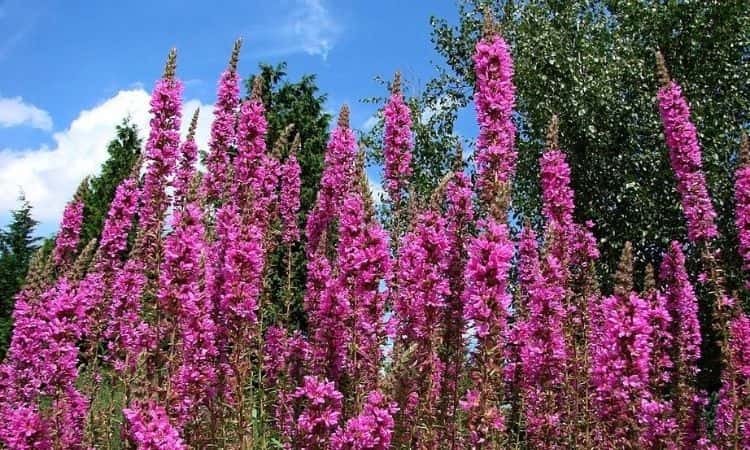
5. Checkerboard Flower
Probably no other plant has such an unusual flower as the checkerboard flower (Fritillaria meleagris) – the roundish bellflowers with the unique pattern in bright purple are a real eye-catcher. But the flowers are not only an attractive decoration, they also provide a richly laid table for beneficial insects such as bumblebees and bees. In the wet zone or on the outer edge of the marsh zone, the flower likes it particularly well, so with a little luck, the plant will even spread by itself.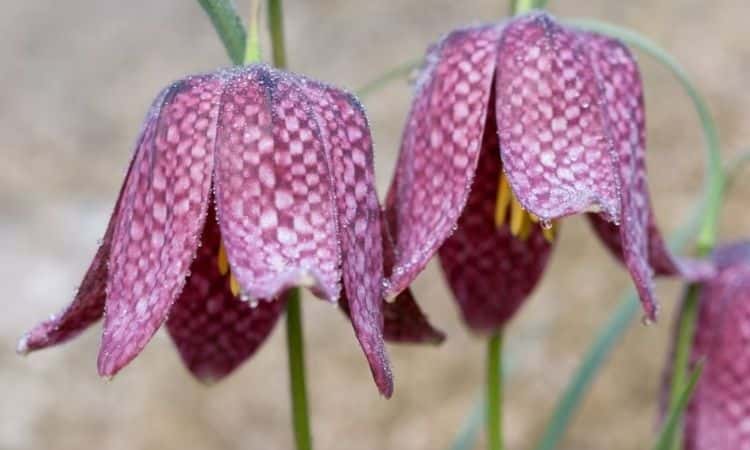
5 Pond Plants For The Sump Zone
The swamp zone is the part of the pond that connects to the wet zone and slowly leads towards the center of the pond. A characteristic of this zone is a fluctuating water level, so not all plants are suitable for this area. In general, the marsh zone is considered to have a water depth of 0 to 4 in.
1. Marsh Marigold
A real classic in the marsh zone is the marsh marigold (Caltha palustris): with its multitude of small yellow flowers and its shiny leaves, the plant is a must for any garden pond.
It is hard to imagine ponds that tend to be in the shade without the marsh marigold in particular, as it forms its full beauty even in rather dark places. In addition, the marsh marigold has a water-purifying effect.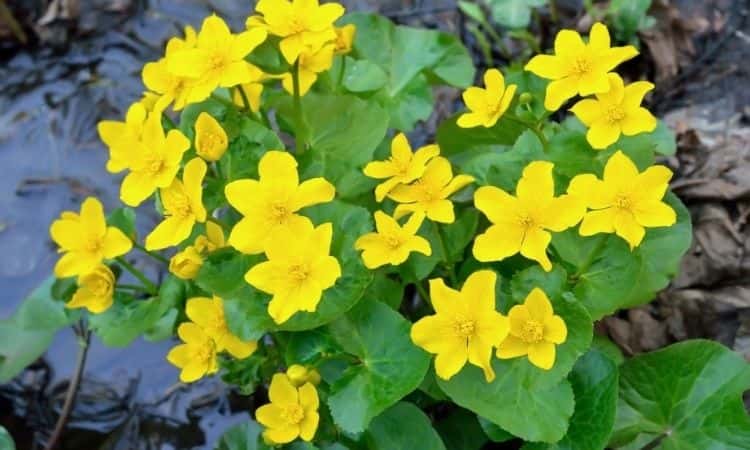
2. Frog Spoon
The Frogspoon (Alisma plantago-aquatica) is probably one of the most interesting plants in the swamp zone and is much more attractive than its name suggests. Especially the contrast between the spoon-like leaves and the extremely filigree flower formations makes the plant so enchanting. The frog spoon is also a particularly good water purifier because it absorbs excess nutrients from the water and thus ensures consistently good water quality.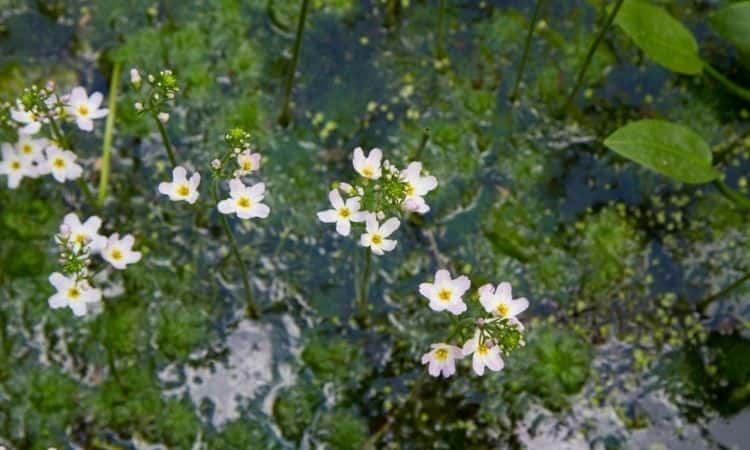
3. Marsh Iris
The swamp iris (Iris versicolor) is especially known at the pond as an extravagant beauty: Its splendid blue-purple flowers with filigree drawings are true feasts for the eyes and enchant their beholders in June and July. In addition to its beauty, however, the swamp iris also impresses with its tenacious nature – the herbaceous plant is considered frost-resistant and is perennial.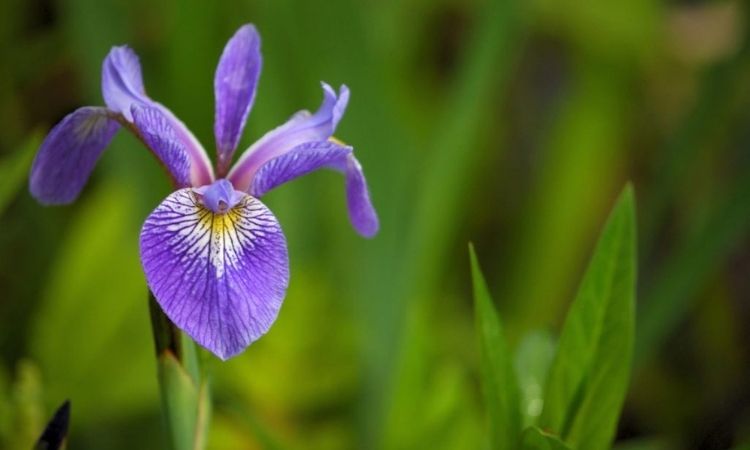
4. Water Mint
Anyone who thinks that pond plants are beautiful but not useful has not yet encountered water mint (Mentha aquatica): With its fresh, typically minty smell, the plant not only pampers the nose but also attracts all sorts of beneficial insects.
People like water mint mainly as a tea, as it is somewhat milder than its sister, peppermint (Mentha x piperita). But water mint can also score points visually, as its numerous spherical inflorescences make it a real eye-catcher.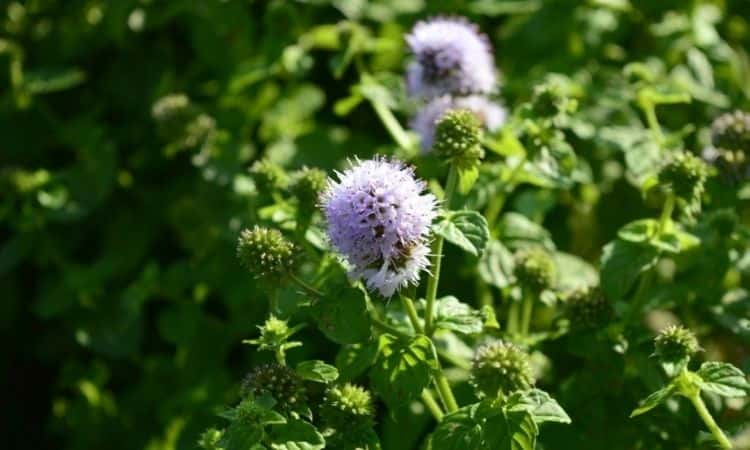
5. Marsh Calla
In the wild, the marsh calla (Calla palustris) has unfortunately become rare. It is therefore all the more pleasing that more and more pond owners are discovering this attractive marsh plant for themselves. The impressive plant attracts all eyes, especially due to its striking bracts, which are white on the inside.
But the red, berry-like fruits that develop from the inconspicuous flowers are also a great decoration. Only in households with small children, the beautiful plant should be used with caution: All parts of the plant are slightly poisonous.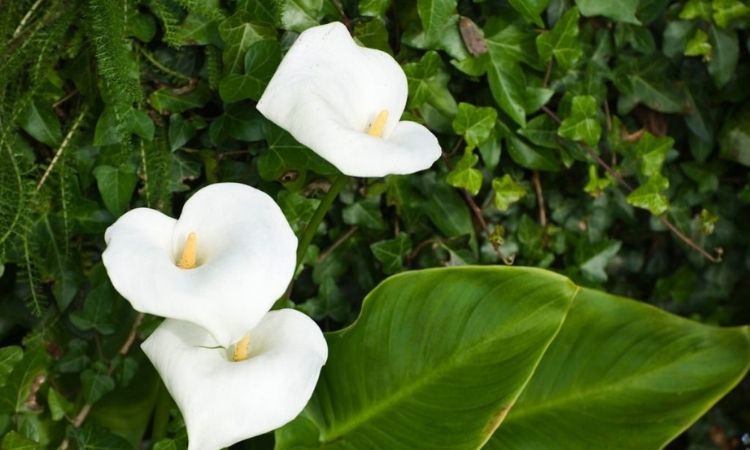
5 Pond Plants For The Shallow Water Zone
Plants in the shallow water zone are characterized by their particular robustness and hardiness. No wonder, after all, this zone is the transition from the marsh zone to deep water and has an average water level of 4 – 15 in.
1. Bulrush
The broad-leaved bulrush (Typha latifolia) is probably one of the best-known riparian inhabitants, and with its velvety inflorescences, it is a true beauty. However, with a size of over two meters and an enormously high nutrient requirement, it is hardly suitable for smaller ponds.
Here it is better to resort to the dwarf bulrush (Typha minima): The little brother of the bulrush grows only about 60 centimeters high, but also forms the popular cob and is thus an attractive substitute. The dwarf bulrush is also not inferior to the larger plants in its water purification function and proves to be a real insider tip in the fight against algae.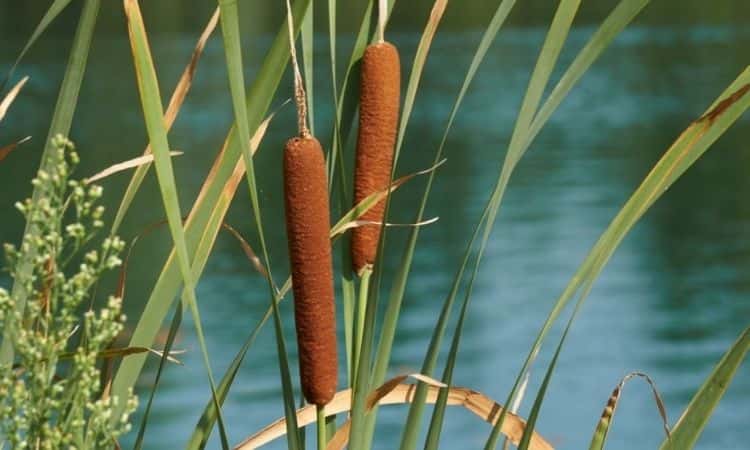
2. Needle Cress
Admittedly, with its long, pointed stems, needle cress (Eleocharis acicularis) looks rather inconspicuous at first glance. But on closer inspection, the plant does have its visual appeal.
For example, the needle lime scores with an interesting play of colors, ranging from light green at the tips to purple at the base of the leaves. In addition to its appearance, needle lime also has two other great advantages: First, it’s great for fortifying shoreline edges, and second, it’s an excellent water purifier, especially making life difficult for algae.
3. Branched Bur-Reed
Extravagant flowers and a horse growth – the branched bur-reed, (Sparganium erectum) quickly turns into an absolute eye-catcher in the garden. Especially its flower balls, which look like greenish-white morning stars, make the pond plant particularly attractive.
But also its fruits, which look like rolled-up the branched bur-reed and gave the plant its name, make it one of the most interesting aquatic inhabitants and a must-have for any garden pond.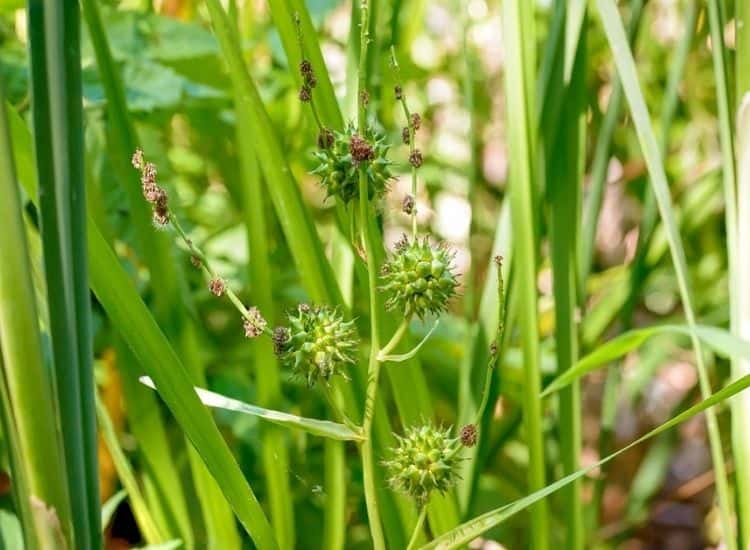
4. Swan Flower
When the swan flower (Butomus umbellatus) presents its flowers from June to August, you know exactly where its name comes from: elegant and lovely as a swan, the filigree inflorescences sit on the plant and enchant their onlookers.
Its honey-sweet fragrance and attraction to insects also make the plant so extremely popular. With a growth height of up to 47 in, the swan flower is thus the undisputed eye-catcher in the garden pond.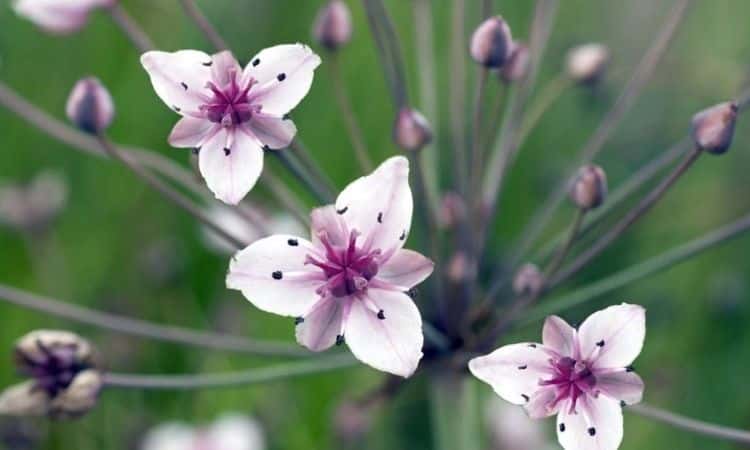
5. Pickerelweed
It doesn’t always have to be flowers – but if a foliage ornamental also comes with decorative blossoms, it’s all the better. The Pickerelweed (Pontederia cordata) can score with exactly this characteristic: Already its heart-shaped leaves are extremely decorative, but when it shows its spikes, which are covered with loud, small, blue flowers, starting in June, it shows its full splendor.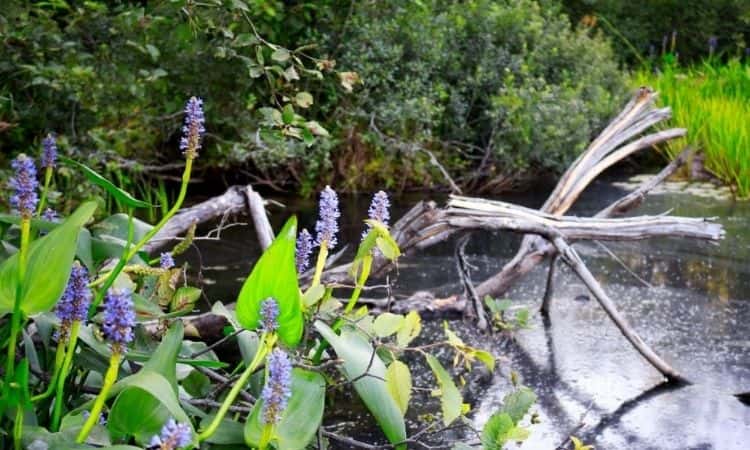
5 pond plants for the deepwater zone
The deepwater zone is the heart of every pond and has a water depth of at least 15 in. Floating plants are especially welcome here, which is why this zone is also called the floating leaf zone. However, other plants also feel comfortable in this area.
1. Water Lettuce
Lettuce on the water? In fact, the name of the water lettuce (Pistia stratiotes) fits like a glove – the floating plant with its light green, shell-like leaves actually looks confusingly similar to a head of lettuce. But in addition to its attractiveness as a foliage ornamental plant, water lettuce also convinces with its useful effect.
Thus, the plant is perfect for algae prophylaxis and additionally serves as an indicator for the biological balance in the pond. Only the USA winter does not like the exotic plant because it is unfortunately not frost-resistant.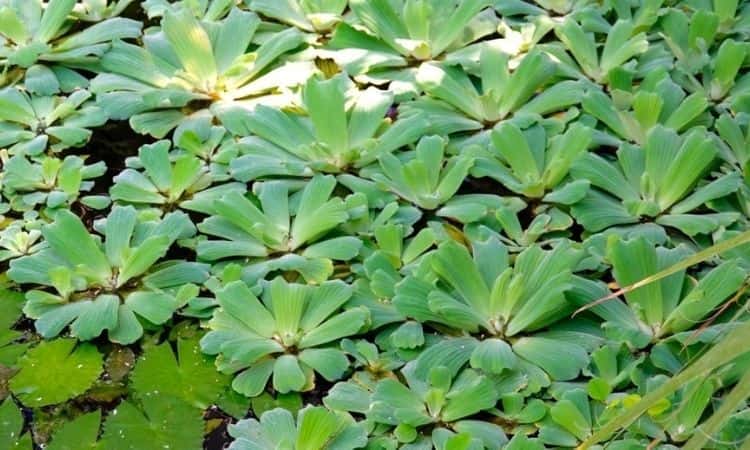
2. Floating Fern
The floating fern (Salvinia natans) is probably one of the easiest to care for and most robust plants that you can cultivate in your pond. This uncomplicated aquatic dweller feels at home from 10 centimeters of water depth into the deep water zone and requires virtually no care. With its elliptical leaves, which have small bristles on the upper side and therefore have an interesting lotus effect, the plant is also visually not to be sneezed at.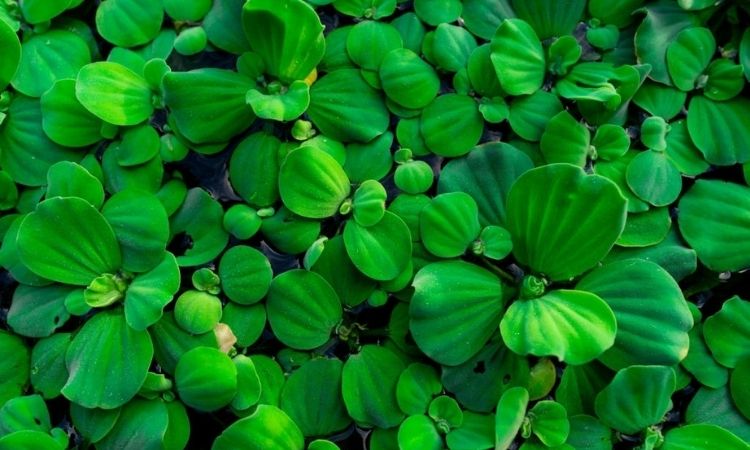
3. Yellow Floating Heart
Bright yellow flowers with fascinating fringe ornamentation are the hallmark of the yellow floating heart (Nymphoides peltata). This native aquatic plant is a real insider’s tip when it comes to great flower decorations in the deepwater zone. But it’s not just its looks that make it a perfect addition to any pond: the plant’s hydro pots reliably filter pond water, and its lush foliage keeps water temperatures even.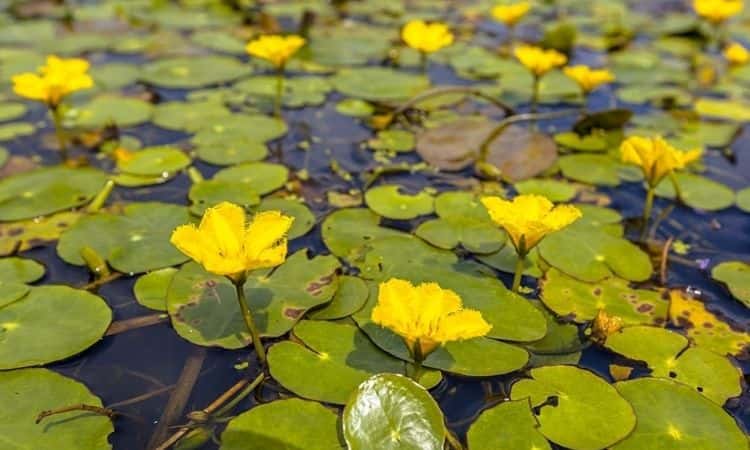
4. Fir Frond
If you’re looking for a striking contrast to common pond plants, you’ll find it in the fir frond (Hippuris Vulgaris): With its needle-like leaves and reddish-brown flowers, the plant resembles a miniature version of mighty conifers rising from a Scandinavian lake.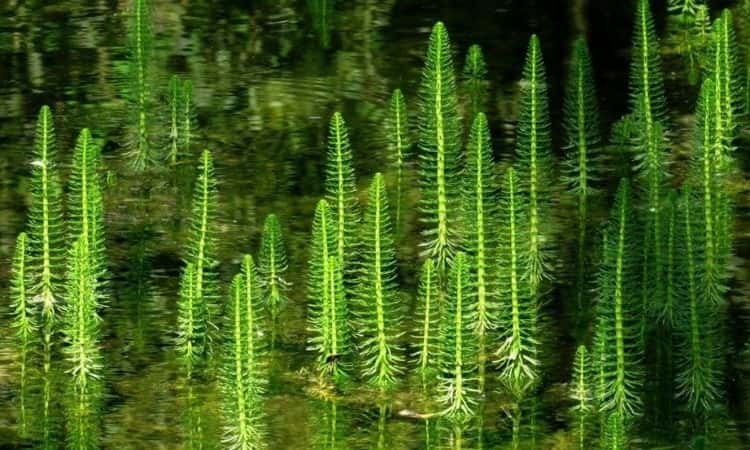
The fact that the leaves of the fir frond remain green even in winter reinforces this impression even more clearly. Likewise, its water-purifying effect makes the plant so popular – especially in ponds stocked with fish, it prevents excessive algae growth.
5. Water Lily
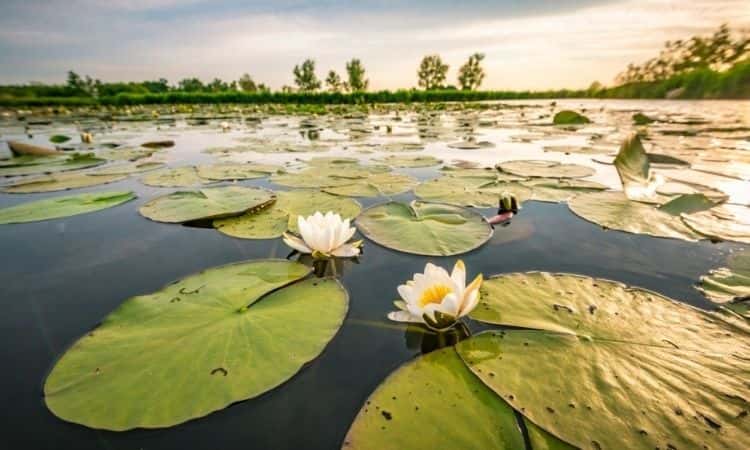 It is the classic among pond plants – the water lily (Nymphaea) is a true beauty and an absolute must for every pond. The floating plants with their large, showy flowers are a real feast for the eyes and enchant with their lovely charm.
It is the classic among pond plants – the water lily (Nymphaea) is a true beauty and an absolute must for every pond. The floating plants with their large, showy flowers are a real feast for the eyes and enchant with their lovely charm.
However, gardeners particularly enjoy the enormous diversity of the plant genus: from small dwarf water lilies (Nymphaea pygmaea), which only need a water depth of 4 – 12 in, to the giant water lily (Victoria), which thrives exclusively in tropical regions and can develop a leaf diameter of up to three meters, there is something for almost every pond.
